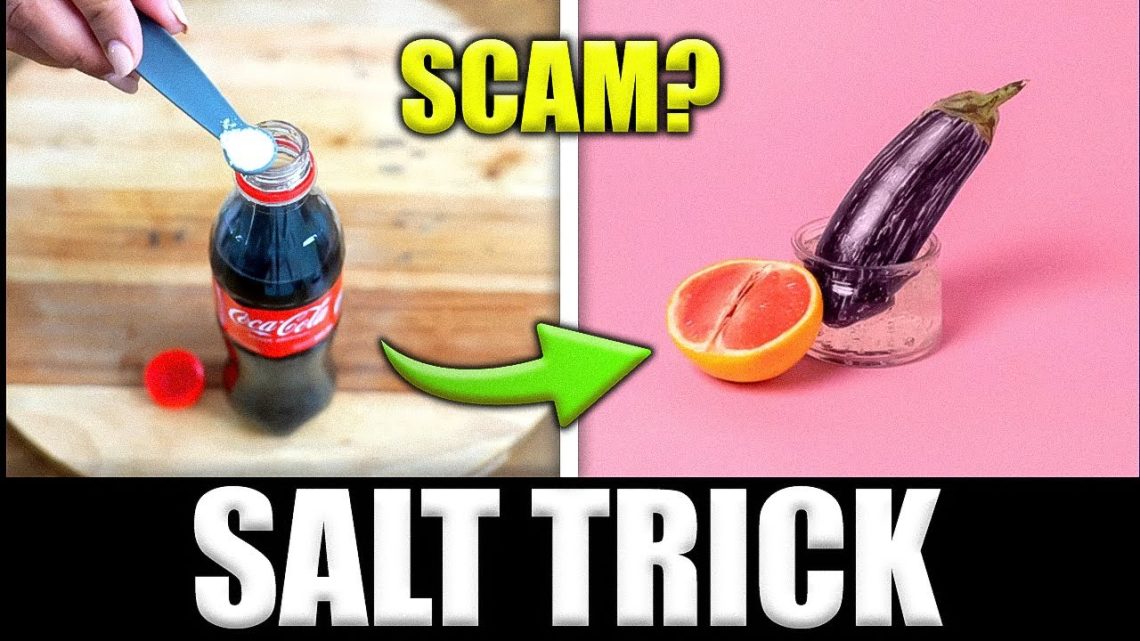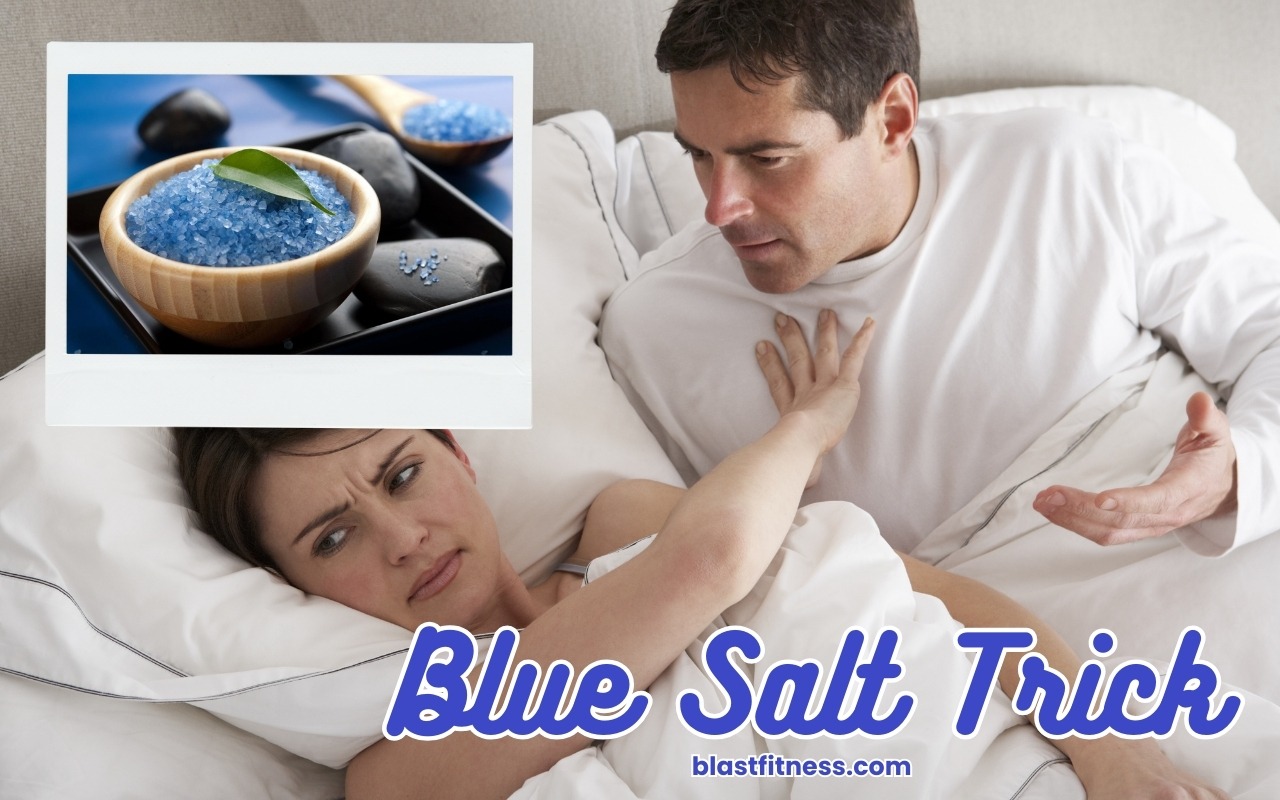Does the blue salt trick work? This question has sparked curiosity among homeowners and those looking for simple solutions to common household problems. The blue salt trick, often associated with preventing cockroaches and other pests, has gained popularity on social media platforms. However, is it scientifically proven, or is it just another myth? This article delves deep into the subject, exploring its origins, effectiveness, and providing expert insights.
Household pests such as cockroaches can be a significant problem for many people. These insects not only invade our homes but can also pose health risks by spreading diseases. Over the years, various home remedies have emerged, promising quick fixes without the need for expensive pest control solutions. Among these remedies, the blue salt trick has captured attention due to its simplicity and affordability.
As we navigate through this comprehensive guide, we will analyze the science behind the blue salt trick, examine its effectiveness, and provide actionable advice based on credible sources. Whether you're a skeptic or a believer, this article aims to equip you with the knowledge you need to make informed decisions about pest control.
Table of Contents
- The Origin of the Blue Salt Trick
- How the Blue Salt Trick Works
- The Science Behind the Blue Salt Trick
- Is the Blue Salt Trick Effective?
- Alternatives to the Blue Salt Trick
- Effective Pest Control Strategies
- Common Myths About the Blue Salt Trick
- Expert Opinions on the Blue Salt Trick
- Safety Concerns with the Blue Salt Trick
- Final Thoughts: Does the Blue Salt Trick Work?
The Origin of the Blue Salt Trick
The blue salt trick, often referred to as the "miracle solution" for pest control, originated from various online forums and social media platforms. It gained traction due to its simplicity and the promise of quick results. The concept involves using blue salt, commonly found in toilet bowls, to deter pests such as cockroaches. However, the origins of this trick remain somewhat ambiguous, with no clear scientific backing to support its claims.
Historical Context of Blue Salt Usage
Blue salt, also known as hydrazine sulfate, has been used for decades in cleaning products and as a deodorizer in toilets. Its primary purpose is to sanitize and maintain cleanliness in bathrooms. Over time, people began experimenting with its potential uses outside of its intended purpose, leading to the belief that it could repel pests.
Why the Blue Salt Trick Became Popular
One of the reasons the blue salt trick became popular is its affordability and accessibility. Many people are hesitant to spend money on expensive pest control services or chemical-based solutions. The idea of using a household item to solve a common problem is appealing, especially to those looking for cost-effective solutions.
How the Blue Salt Trick Works
Proponents of the blue salt trick claim that it works by creating an environment that is toxic or uninviting to pests. The theory suggests that the chemical composition of blue salt disrupts the nervous systems of insects, leading to their demise. However, this claim lacks substantial evidence and remains speculative.
Key Components of Blue Salt
Blue salt primarily consists of hydrazine sulfate, a compound that is toxic in large quantities. While it may have some deterrent effects on certain pests, its effectiveness is limited and inconsistent. Additionally, the concentration of blue salt used in household products is often too low to have any significant impact on insects.
Application Methods
Those who use the blue salt trick typically place small amounts of the substance in areas frequented by pests, such as kitchen cabinets, corners, or behind appliances. The belief is that the scent or chemical composition of blue salt will repel insects and prevent them from entering the home. However, this method is not supported by scientific research.
The Science Behind the Blue Salt Trick
To understand whether the blue salt trick works, it is essential to examine the scientific principles behind it. Pest control relies on disrupting the life cycles of insects or creating environments that are inhospitable to them. While blue salt may have some chemical properties that affect pests, its efficacy is questionable.
Chemical Reactions and Insect Behavior
Hydrazine sulfate, the main component of blue salt, is known to be toxic in high concentrations. However, the levels found in household products are unlikely to pose a significant threat to insects. Furthermore, the behavior of pests such as cockroaches is influenced by factors such as food availability, temperature, and humidity, rather than the presence of blue salt.
Studies and Research Findings
There is limited scientific research specifically addressing the effectiveness of the blue salt trick. Most studies focus on traditional pest control methods, such as insecticides or bait systems. While some anecdotal evidence suggests that blue salt may have a mild deterrent effect, these claims are not supported by rigorous scientific testing.
Is the Blue Salt Trick Effective?
After analyzing the available data, the effectiveness of the blue salt trick remains uncertain. While some users report positive results, these outcomes are likely due to other factors, such as improved hygiene or the use of complementary pest control methods. Relying solely on blue salt as a pest control solution is not advisable.
Factors Influencing Effectiveness
- Concentration of blue salt used
- Behavioral patterns of pests
- Environmental conditions
- Proper application techniques
Real-World Examples
Many homeowners have tried the blue salt trick with varying degrees of success. Some report that it reduces pest activity, while others find no noticeable difference. It is important to note that these results are subjective and may not apply universally.
Alternatives to the Blue Salt Trick
For those seeking more reliable pest control solutions, there are several alternatives to the blue salt trick. These methods are backed by scientific research and proven to be effective in managing pest populations.
Natural Pest Control Methods
- Diatomaceous earth
- Boric acid
- Essential oils (e.g., peppermint, tea tree)
- Natural baits and traps
Professional Pest Control Services
When dealing with severe pest infestations, professional pest control services are often the best option. These experts use advanced techniques and products to eliminate pests effectively and safely. Additionally, they provide long-term solutions to prevent future infestations.
Effective Pest Control Strategies
To achieve lasting pest control, it is crucial to adopt a comprehensive approach that addresses the root causes of infestations. This involves maintaining cleanliness, sealing entry points, and using appropriate pest control methods.
Maintaining a Clean Environment
Regular cleaning and proper waste management are essential in preventing pest problems. By eliminating food sources and hiding spots, you can significantly reduce the likelihood of pests invading your home.
Sealing Entry Points
Pests often enter homes through small gaps and cracks. Sealing these entry points with caulk or weatherstripping can help prevent infestations and make your home more secure.
Common Myths About the Blue Salt Trick
There are several myths surrounding the blue salt trick that contribute to its popularity. Debunking these myths is essential to understanding its limitations and avoiding potential risks.
Myth 1: Blue Salt Completely Eliminates Pests
While blue salt may have some deterrent effects, it is not a guaranteed solution for pest control. Relying solely on blue salt can lead to ineffective results and wasted effort.
Myth 2: Blue Salt is Safe for Pets and Humans
Hydrazine sulfate, the primary component of blue salt, is toxic in high concentrations. Excessive exposure can pose health risks to humans and pets, making it important to use caution when handling this substance.
Expert Opinions on the Blue Salt Trick
Experts in the field of pest control and entomology generally agree that the blue salt trick lacks scientific validation. While it may have some limited effects, it is not a reliable or comprehensive solution for pest management.
Testimonials from Pest Control Professionals
Many pest control professionals advise against relying on home remedies like the blue salt trick. They emphasize the importance of using proven methods and consulting experts for effective pest control.
Scientific Community's Perspective
The scientific community remains skeptical of the blue salt trick, citing the lack of empirical evidence to support its claims. Researchers encourage further studies to explore alternative pest control methods that are safe and effective.
Safety Concerns with the Blue Salt Trick
While the blue salt trick may seem harmless, it is important to consider potential safety risks associated with its use. Understanding these risks can help you make informed decisions about pest control.
Potential Health Risks
Exposure to hydrazine sulfate can cause respiratory issues, skin irritation, and other health problems. It is crucial to handle blue salt with care and keep it out of reach of children and pets.
Environmental Impact
Improper disposal of blue salt can have negative effects on the environment. It is important to follow proper disposal guidelines to minimize its impact on ecosystems.
Final Thoughts: Does the Blue Salt Trick Work?
In conclusion, the blue salt trick remains a controversial topic in the world of pest control. While some users report positive results, the lack of scientific evidence and potential safety risks make it an unreliable solution. For effective pest management, it is recommended to adopt proven methods and consult experts when necessary.
We invite you to share your thoughts and experiences with the blue salt trick in the comments section below. Additionally, explore our other articles on pest control and home improvement for more valuable insights.


